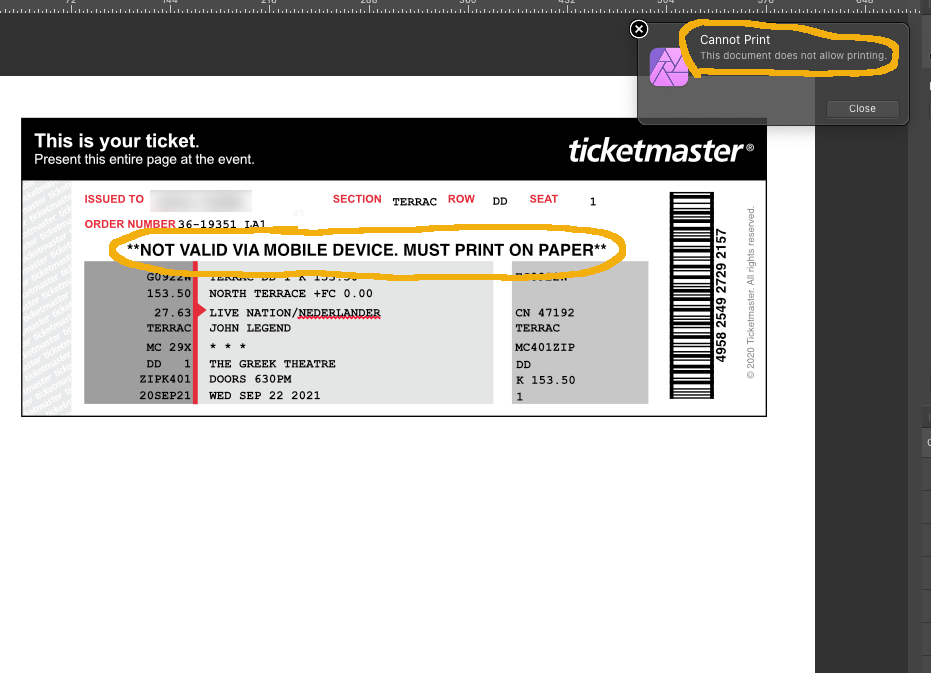
Stokestack
Members-
Posts
459 -
Joined
-
Last visited
Everything posted by Stokestack
-
Objects to "No Print"
Stokestack replied to Ray C's topic in Feedback for Affinity Publisher V1 on Desktop
The simplest and most versatile option is a "no-print" checkbox on every layer. While the label example is exactly why I looked this up in the first place, there are plenty of other use cases. For example, maybe you're doing some kind of separations of your drawing for a creative process. -
That is obviously incorrect. The bottom layer is the one getting blurred; this has been shown in numerous examples. Not to mention: The proper solution would not be to blur the higher-resolution layer; it would be to resample the lower-resolution layer to match the higher-resolution one and then do the merge. Anyone know if this has been fixed yet? Now we're up to... three years?
-
Thanks for the reply. I did open it in another reader (called Skim, a free one that I recommend because unlike Apple's, its search works properly) and printed it to a PDF. Then I opened that one in Designer and was able to do whatever I wanted with it. I'm sure the document has some annoying metadata set, which Designer is reacting to. But not being able to print it (when other apps can) is odd. Anyway, no big deal.
-
Objects to "No Print"
Stokestack replied to Ray C's topic in Feedback for Affinity Publisher V1 on Desktop
This isn't just about Adobe apps. This feature is also present in Corel Draw and undoubtedly other similar applications. Citing your own experience and "not needing" this feature is a bit pointless. The last time I encountered this problem, I was printing labels. You know what ruins an entire sheet of labels? Having the template printed on them in addition to your text. Now there's a simple everyday case that can afflict "pros" and "hobbyists" alike. What about people who print PCB layouts for heat transfer? Or other uses you may not be familiar with? This isn't "I want the kitchen sink in my software." It's a simple feature that has existed in vector-art programs for decades, and has been requested in this one for its entire existence. If this is hard to implement, there are some profound underlying design flaws in the software. -
Objects to "No Print"
Stokestack replied to Ray C's topic in Feedback for Affinity Publisher V1 on Desktop
Which, ironically, is redundant. It doesn't matter what any particular user's use case is or how important it is to him. The fact remains that this is a fundamental feature on this kind of software, but is inexplicably missing from this product after years and years of complaints. -
Objects to "No Print"
Stokestack replied to Ray C's topic in Feedback for Affinity Publisher V1 on Desktop
The lack of this basic feature cripples the software even for "hobby" users. -
Thanks for that detailed explanation. Even if there had been a layer selected, however, there would still be nothing for the tool to sample unless you count transparency as something. And if there is something to sample, then presumably there's something to select... obviating the need to select a layer beforehand. I never would have seen these settings, which demonstrates another UI pitfall: Don't bury settings under cutesy names ("Assistant", "Studio" and the like) that have no inherent meaning to the user... who expects to find settings under Preferences or Settings, and meangingful subcategories therein. Regardless, thanks for taking the time to point out that info!
-
Thanks for the reply. This is a good point. Now it's clear that this behavior stems from the odd proclivity of Photo to have no layer selected. I don't recall encountering this so often (or maybe ever) in Photoshop. I wondered if it was even possible to have no layer selected in Photoshop; but a quick search shows that there's auto-layer-selection that you can turn off. But it seems that it is far less common to encounter this condition in PS for some reason. Very often I perform actions in Photo that do nothing... only to find that once again no layer is selected. Not sure exactly what this stems from, but it's compounded by the many places in Photo where a tool or control should be greyed out (because it's inapplicable) but isn't. I'm not saying that's the case with Fill, because you can argue that it least it's doing something...





